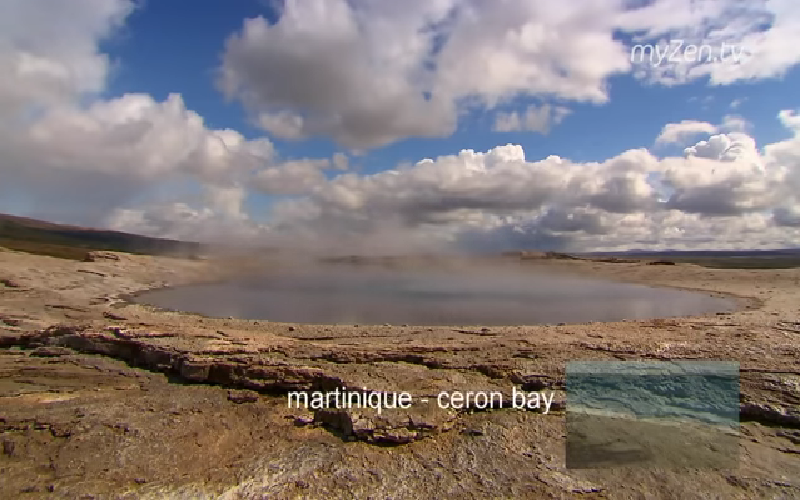
Good afternoon, my dear readers. Today I invite you for a walk and a short tour of the Hermitage.
It is assumed that it will take about 10 years to examine all the exhibits from the collection of the most famous museum in St. Petersburg and Russia. So, to save you time, we’ve rounded up the 25 most important ones.
The art collection was founded in 1764 by special decree of Catherine the Great. Her personal collection is currently in the wing of the Winter Palace known as the Hermitage. Russian emperors who came after Catherine continued her work, even acquiring entire collections of Western European paintings, sculptures and archaeological artifacts from the ancient cultures of Egypt, Greece, Rome and the East.
Today the Hermitage is one of the largest art museums in the world. His collection (more than 3 million exhibits) is housed in several buildings, two of which – the Winter Palace and the General Staff building (in front of the palace) – are open to the public. We present you a small part of the masterpieces for which the Hermitage is famous and which can be seen in one visit.
Cameo Gonzaga (portrait of Ptolemy II and Arsinoe II). Alexandria, Egypt, 3rd century BC
This unique double portrait was presented to Emperor Alexander I in 1814 by Josephine, wife of Napoleon Bonaparte, in gratitude for the personal visit of the Russian Tsar to her palace in Paris, as a guarantee of her safety at the entrance to the city of victorious troops. Exhibited in the Cameo Gallery on the first floor of the Hermitage.
Aphrodite (Venus). Ancient Greece, 2nd century BC
This marble statue, 167 cm high, was a gift from the Vatican to Peter the Great (according to some sources, it was exchanged for the relics of St. Bigita, Sweden). The “Pagan Idol” was originally exhibited in the Summer Garden, but was later moved to the Tauride Palace, the home of Prince Potemkin. The statue was installed in the Hermitage in 1852 for the opening of the New Hermitage (where it can still be seen in room 109).
Statue of Jupiter. Ancient Rome, late 1st century AD
The colossal sculpture of the ancient god was transferred to the Hermitage in 1861 by Alexander II. One of the museum’s largest statues is on display in Hall 107 of the New Hermitage.
Leonardo da Vinci. Madonna Lita, 1490s
One of the first works of the mature Renaissance, this painting was created for the rulers of Milan. The Hermitage bought it in 1864 from the Duke of Lita, a member of an aristocratic family from Milan who kept the painting for several centuries. The work is exhibited in the 214th hall of the Big (Old) Hermitage.
Giovanni Battista Sima da Coneliano. Annunciation, 1495
This work originally had a wooden base, but when it was acquired by the Russian prince Sergei Golitsyn in the mid-19th century, the restorer transferred it to canvas. In 1886, Golitsyn sold it at an auction, where it was bought for a museum. It is located in Hall 217 of the Old Hermitage.
Rogier van der Weyden. Saint Luke painting the Mother of God, 15th century.
The picture strangely ends up in the Hermitage. It is divided into two parts: the right half with St. Luke was acquired in 1850 for the collection of King Wilhelm II of the Netherlands, who was married to the daughter of Emperor Paul; The left side, depicting the Madonna and Child, was bought in 1884 by the Parisian antiquarian Antoine Berat.
Raphael. Conestabile Madonna, 1504
This work by the great Raphael is in the collection of Count Conestabile della Stafa from Perugia, Italy. In 1871, Tsar Alexander II bought the painting for his wife Maria Alexandrovna. It was moved to the Hermitage in 1881 by decree of the Empress. It can be seen in Room 229 of the New Hermitage.
Giorgione. Judith, 1504
The only painting in Russia undoubtedly owned by Giorgione. Purchased in 1772 by Catherine the Great, this masterpiece of the Venetian school is one of the jewels in the Parisian collection of Baron Pierre Creuse. The canvas, 144 cm wide, is exhibited in Hall 2017 of the Greater Hermitage.
Lucas Cranach the Elder. Venus and Cupid, 1509
The German artist was one of the first in Northern Europe to paint a nude goddess of love. Catherine the Great acquired his works along with the entire Dresden collection of the German Count Heinrich von Brühl. With her help, in 1769, the basis of the museum collection was formed. It is located in Hall 255 of the Small Hermitage.
Michelangelo. Kneeling boy, 1530-1534
Few museums in the world can exhibit the sculptures of the famous genius of the Renaissance. This is his only sculpture in Russia. It was bought by Catherine the Great in 1785. For some time it was kept at the Imperial Academy of Arts, where it served as a model for artists and sculptors.
Titian. Repentant Magdalene, 1560s
According to legend, the dying Titian holds this painting in his hands. It was sold by Cristoforo Barbarigo, whose entire collection was bought for the Hermitage by Nicholas I in 1850. The works of the Venetian master are on display in Room 211 of the Greater Hermitage.
Caravaggio. Lute player, 1595
The painting exists in three versions. The other two are in the Metropolitan Museum of Art and the English Badminton House. The third version, part of the collection of the Italian Vincenzo Justiniani, was bought by Alexander I in 1808. The Lute Player can be seen in Room 232 of the New Hermitage.
Diego Velazquez. Breakfast, 1617
Since the painting is in the personal collection of Catherine the Great, it dates back to the early period of the museum’s existence, although there is still debate about its authenticity. The Spanish artist’s masterpiece is on display in Room 239 of the New Hermitage.
Peter Paul Rubens. Perseus freeing Andromeda, 1622
This work by the Flemish artist was commissioned by Catherine the Great along with the collection of Count Heinrich von Brühl and is one of the works included in the museum’s original collection. A masterpiece dedicated to the Greek myth of Perseus is on display in Hall 247 of the New Hermitage.
Nicholas Poussin. Tancred and Erminia, 1631
The work of the French classicist artist Poussin is inspired by a scene from the poem “Jerusalem” by the Italian poet Torquato Tasso. In 1766, the painting was bought from the collection of the Parisian artist Jacques Aved. It can be seen in Hall 279 of the Winter Palace.
Rembrandt. Return of the Prodigal Son, 1668
Catherine the Great bought this painting by the Dutch artist Rembrandt from the French Duke Andre d’Ansezen. His wife’s grandfather served as a diplomat at the court of Louis XIV and probably bought the painting in the Netherlands. It is located in the 254th hall of the New Hermitage.
Jean Baptiste Simeon Chardin. Laundress 1730
This masterpiece of the French artist and “poet of everyday life” Chardin is part of the collection of Baron Pierre Crozat, and in 1772 Catherine the Great bought it. The painting is on display in Hall 284 of the Winter Palace.
Peacock watch. London, 1770s
This luxurious mechanical watch, created by the English jeweler James Cox, was commissioned to Catherine the Great by her courtier (and favorite) Prince Potemkin. Arriving in Russia in 1781 in separate parts, they were assembled by the famous mechanic Ivan Kulibin. Today, the clock is on display in Hall 204 of the Small Hermitage.
Antonio Canova. Cupid and Psyche, 1794-99
The Venetian artist created two versions of this marble sculpture group. One is in the Louvre, and the other was bought by the Russian prince Yusupov and for a long time adorned the family mansion.
In 1926, after the revolution, the statue was transferred to the museum and exhibited in room 241 of the New Hermitage. In the same hall there is another “standing” sculpture by the same artist, which Alexander I bought from Josephine.
Claude Monet. Lady in the Garden of St. Andress, 1867
This painting by the great impressionist was bought in 1899 by the Russian connoisseur Pyotr Shchukin, whose collection was nationalized after the revolution. The work entered the museum in 1948. Exhibited in Hall 403 of the General Staff.
Camille Pissarro. Boulevard Montmartre, 1897
The painting by the French Impressionist belongs to the Russian merchant and collector Mikhail Ryabushinsky. After the revolution, he donated part of his collection, including this work, to the Tretyakov Gallery in Moscow. Later it was transferred to the State Museum of New Western Art, also located in Moscow, and after its closure in 1948, it was transferred to the Hermitage, where it can be seen in Room 406 of the General Staff Building.
Pablo Picasso. Two sisters (meeting), 1902
Russian collector Sergei Shchukin bought many of the Spanish artist’s paintings, including this masterpiece from his Blue Period. The Shchukin collection first came to the State Museum of New Western Art, and in 1948 to the Hermitage, where it remains to this day in Hall 432 of the General Staff Building.
Rothschild’s Easter clock by Faberge, 1902
This amazing Faberge Easter egg belongs to Baron Edward Rothschild. For a long time it remained the property of the Rothschild family and was not exhibited anywhere. In 2007, Russian collector Alexander Ivanov bought an egg at Christie’s auction. It was donated to the Hermitage in 2014. Exhibited in Hall 302 of the General Staff.
Henri Mathis. Dance, 1910
The painting was commissioned personally by the Russian collector Sergei Shchukin for his own mansion. The first version of the painting was in the Museum of Modern Art in New York, and Shchukin’s version was nationalized along with his collection and transferred to the Hermitage in 1948. It is located in room 440 of the General Staff, dedicated to Henri Matisse.
Wassily Kandinsky. Composition VI, 1913
The picture of the best Russian impressionist was created in Germany, where he lived for ten years. The canvas is an extensive commentary explaining the meaning of certain colors and means of expression. In 1948, the work moved from the State Museum of New Western Art to the Hermitage, which was opened after the revolution and then closed.
Have you been to the Hermitage? Have you seen these priceless exhibits?


